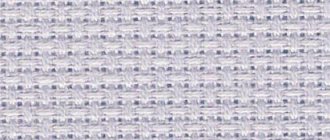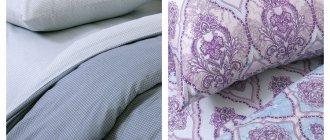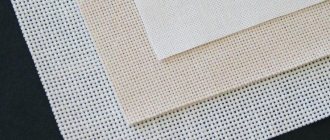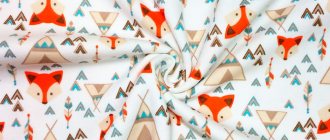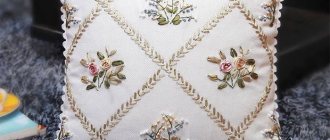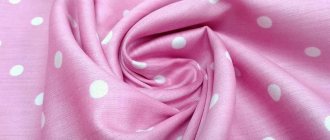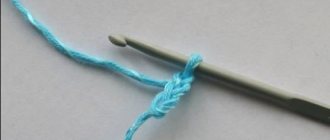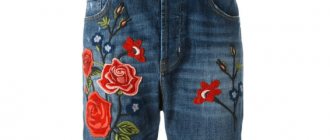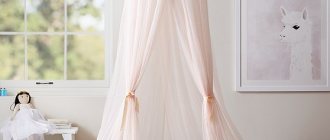Embroidery on fabric is one of the most common handicrafts. You can cross stitch on any fabric. The only condition is that it must have even longitudinal and transverse threads. Canvas is what the fabric for cross stitch is called. It is sold in specialized craft stores. Today you can purchase an innovative material - water-soluble interlining for cross stitch. In addition, options such as stramine, linen or plastic are offered.
The right fabric for cross stitch will make your work irresistible and unique. You can experiment with it, giving different visual effects.
Features of embroidery materials
Theoretically, any fabric can be used for needlework. But it is better to select depending on the chosen embroidery technique.
Cross
Inelastic fabrics with simple weave threads are suitable for counted embroidery. The thinner the fibers and the tighter the fit to each other, the more elegant and finer the pattern. Recommended fabric for cross stitch: linen, cotton, canvas of all types, non-woven materials.
Evenly woven fabrics are also suitable, but they are more difficult to work with because they do not have clearly defined holes. These basics are recommended for experienced craftswomen.
Gladue
Embroidery with stitches does not require clear holes on the fabric, so you can use any fabric except stretchable ones (because you need to strengthen the backside with adhesive or sew-on interlining). The most convenient fabrics for satin stitch embroidery are cotton, linen, mixed fabric, and denim. You can also use thick silk, pure or half-woolen materials.
In addition, the fabrics must be dense enough so that the needle does not leave holes. Especially if the satin stitch is done with thick threads: wool, acrylic or mohair. In other cases, it is better to embroider with floss.
Ribbons
Any fabric can be used as a base, regardless of its composition: cotton, linen, silk, wool and mixed fabrics. It also doesn’t matter whether they are plain, patterned or piled: the ribbons are larger than the threads, so they give a convex pattern without going deep into the base.
Fabrics for embroidery should be:
- strong enough to hold voluminous and sometimes heavy ribbon patterns;
- have a low density so that the needle and tape can easily pass without forming holes;
- wrinkle-resistant, since ribbon embroidery cannot be ironed;
- soft enough so that the ribbons do not fray when passing through the base. If you use delicate transparent fabric (tulle, chiffon) for embroidery, then it should be reinforced with a lining on the wrong side.
Advice! It is better to embroider on knitwear with ribbons whose width corresponds to the size of the loops, so as not to damage them.
Carpet technology
Embroidery is done in two ways: loop and knot. In the first case, a dense terry surface is formed on the front side, in the second - a split pile.
Fabric for carpet embroidery should be strong, with a mesh-like structure. Stramin, thick canvas with plain weave, linen and burlap meet these requirements.
Merezhka (hardanger)
100% cotton fabric. On such a fabric, the cells are formed by a 2*2 weave. Visually clear squares are not very visible due to the fact that the threads are not secured to each other. It is good to embroider both paintings and ordinary decorative patterns on such fabric. The seams on such a fabric turn out to be very small; it is better to embroider with one thread or two, but the stitch should be tapestry. This base is only suitable for experienced needlewomen, because... quite difficult to work with.
You might be interested in Features of cross stitch on tablecloths and napkins
Hemstitch
Types of canvas
Mesh weave material is the most popular type for embroidery. Can be used as a base or as an auxiliary element.
Invoice
When you need to do embroidery on intricately woven fabric, knitwear, leather or any other non-woven material, a removable base will help out. Overlay canvas is also convenient to use when decorating finished clothes. It needs to be attached (basted or pinned) to the desired area, and then the work must be done. After this, remove the base from under the seams by manually pulling out each thread.
Aida
The most popular type of canvas from the German company Zweigart for cross stitch and counting techniques. Available in different densities, mainly from cotton threads. There are also fabrics with the addition of viscose or lurex, but much less frequently.
Author:
Anastasia Kukushkina
I hope you enjoy the article I have prepared for you! If you find errors in it, write to me about it! I will answer any questions you have, ask them!
